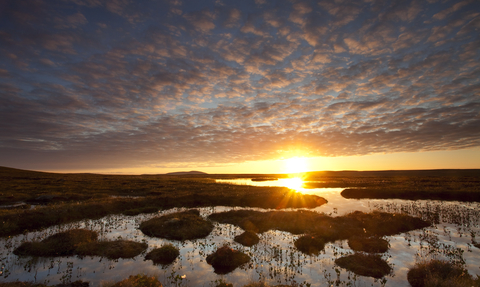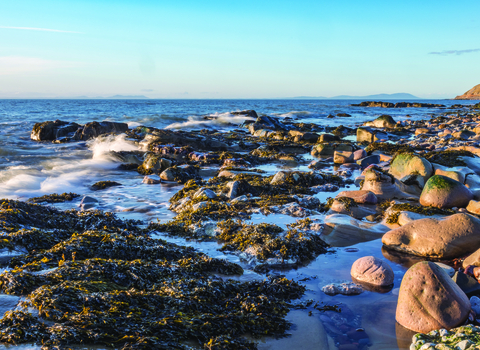
Mark Hamblin/2020 VISION
Nature based solutions to climate change
Every day we see depressing stories in the media about the state our planet is in, whether it’s the climate emergency or the wildlife emergency and the loss of species and habitats around the planet, and of course this effects here in Cumbria too.
We have to tackle these big global problems locally here in our own patch.Cumbria Wildlife Trust
Donate to fight the climate crisis
What are nature-based solutions to the climate crisis?
Trees are not the only natural solution to reducing the greenhouse gasses in our atmosphere.
There are many other habitats that take carbon out of the atmosphere and store it: peatlands, saltmarshes, hay meadows, seagrass beds, and wetlands to name a few.
Although these habitats take up carbon slowly, compared with cutting emissions and are not an alternative, we need to protect them, and in some cases restore them to stop existing locked-up carbon being released.

Green carbon solutions to the climate crisis
Our habitats on land have a huge role to play in addressing climate change.
Globally, plants have removed 25% of human-made carbon emissions, whilst our soils contain more carbon than is stored in those plants and the atmosphere combined!

Parton beach © John Fare
Blue carbon solutions to the climate crisis
Blue carbon has a huge role to play in tackling climate change. Oceans absorb 20-35% of human-made carbon emissions every year.
Carbon is part of the whole system - stored in the tissues of the plants and animals, and in the mud and sediments.
Frequently Asked Questions
Is nature really a ‘solution’ to the climate crisis?
Looking after carbon stores in woodlands and soils, on the coast and in our seas, and restoring damaged and lost habitats, will make a difference in the long term. If we take this action now, this will make a difference in decades to come. But this is not an alternative to cutting emissions now.
Why don’t we just plant lots of trees to take up carbon?
In the past, fast-growing conifers have been planted in the wrong places, such as on peatbogs, damaging the peatland’s ecology. Damaged peatbogs release carbon dioxide as they dry out. A lot of carbon is also stored in non-peat soils too, particularly if they are rich in organic matter, such as those in woodlands and flower-rich grasslands, planting trees on these soils could release more carbon dioxide than the trees take up.
Do you have a strategy to how we can increase nature-based solutions to climate change in Cumbria?
Any actions we take must be sustainable in the face of climate change.
Cumbria Wildlife Trust, alongside the Cumbria Local Nature Partnership, has worked with Cumbria County Council to create a Local Nature Recovery Strategy.
The purpose of this strategy is to restore and link up habitats so that species can thrive, and agree the best places to help nature recover, plant trees and woodland, restore peatland, mitigate flood and fire risk, and create green spaces for local people to enjoy.
Read The Wildlife Trusts ‘Let Nature Help’ (PDF) for some great examples from across the UK.
Is there a target for nature’s recovery to help support nature-based solutions to climate change?
Cumbria Wildlife Trust, and The Wildlife Trusts nationally, are calling for at least 30% of our land and sea to be connected and protected for nature’s recovery by 2030.
In Cumbria, only 15% of land is currently protected for wildlife and only one fifth (or 3% of the whole county) of this protected land is in a good condition for wildlife.
36% of the Irish Sea has a protective designation such as ‘Marine Conservation Zone’ but only 5% has any sort of protection measures, such as a byelaw to stop use of a dredge when fishing.
Only 1% of the Irish Sea is fully protected by restricting any fishing or offshore development. Find out more about our #30by30 campaign

